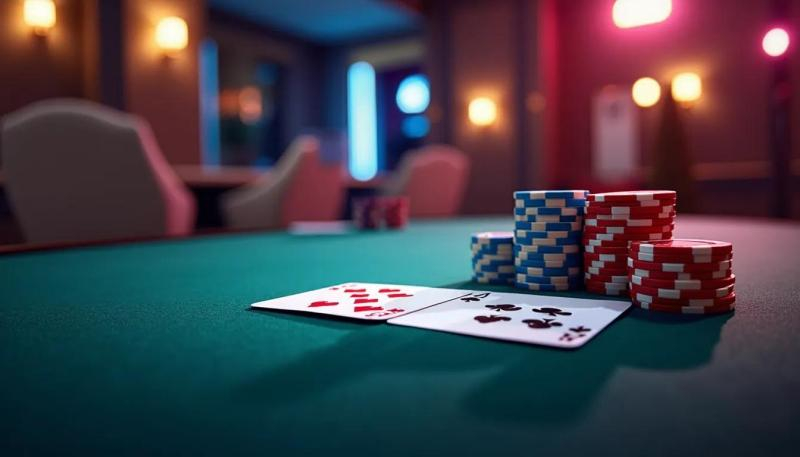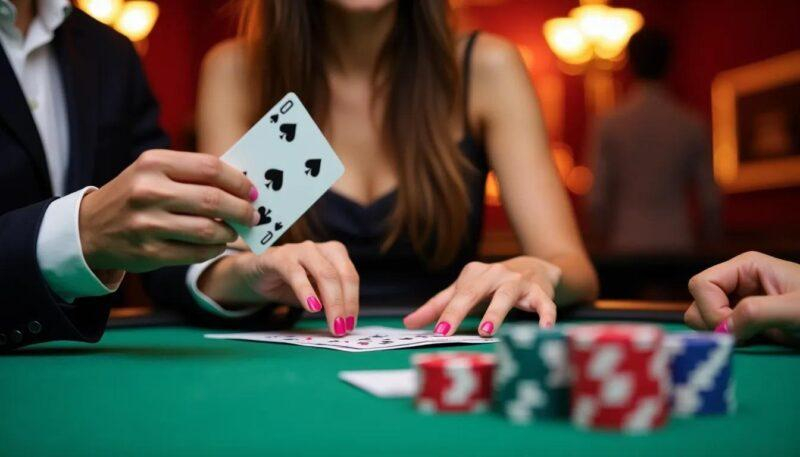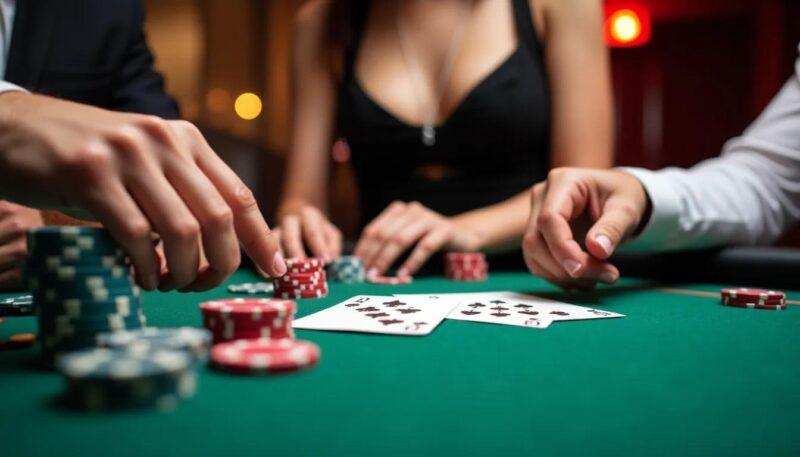In the world of poker, finding equilibrium is key to success. Just like a tightrope walker must find balance to stay steady, a poker player must maintain equilibrium to navigate the unpredictable waters of the game.From managing your emotions to making strategic decisions, mastering the art of poker equilibrium is essential for consistent performance at the table. In this article,we’ll explore tips and tricks for finding that delicate balance and keeping your game on track. So grab your chips and get ready to level up your poker skills.
Mastering the Concept of Poker Equilibrium
Maintaining poker equilibrium is crucial for success in the game. It involves finding the right balance between aggression and passivity, bluffing and value betting, and adjusting based on your opponents’ tendencies. To master this concept, consider the following tips:
- Study Game Theory: Understanding the basic principles of game theory can help you make more informed decisions at the poker table. By learning how to think strategically and consider all possible outcomes, you can improve your overall game.
- Practice Discipline: One key aspect of maintaining equilibrium is staying disciplined in your approach. Avoid letting emotions dictate your actions and stick to a solid game plan, even when faced with tough decisions.
- Stay Flexible: While having a defined strategy is important, it’s also essential to remain adaptable during gameplay. Be willing to adjust your tactics based on the changing dynamics of the table and the behavior of your opponents.
To visualize the concept of poker equilibrium,consider the following hypothetical scenario:
| Player | Aggression Level | Success Rate |
|---|---|---|
| Player A | High | 30% |
| Player B | Low | 70% |
In this scenario,Player B demonstrates better poker equilibrium by maintaining a lower aggression level and achieving a higher success rate. By finding the right balance between aggression and caution, you can increase your chances of coming out on top in the long run.Mastering the art of poker equilibrium takes time and practice, but with dedication and a strategic mindset, you can elevate your game to the next level.
Managing Your Emotions at the Table
In the high-stakes world of poker, emotions can make or break a player’s success at the table. It’s crucial to maintain a sense of equilibrium to make rational decisions and keep your focus sharp.Here are some tips for managing your emotions during a game:
Practice Mindfulness: Before sitting down at the table, take a few moments to center yourself and focus on the present moment. Practice deep breathing exercises to calm your nerves and clear your mind of distractions. Stay mindful of your emotions throughout the game, and take breaks when necessary to regroup and refocus.
Stay Stoic: Poker is a game of ups and downs, and it’s important to maintain a stoic attitude irrespective of the outcome of each hand. Avoid getting too high or too low emotionally, as this can cloud your judgment and lead to costly mistakes. Remember that luck plays a role in poker, and focus on making the best decisions based on the data available.Use Positive Affirmations: Keep a positive mindset at the table by using affirmations to boost your confidence and stay motivated. Remind yourself of your skills and accomplishments, and visualize success in each hand you play. By cultivating a positive attitude, you can stay focused and resilient in the face of adversity.
| Never tilt | Stay calm under pressure |
| Avoid emotional decision-making | Focus on the long-term strategy |
Strategies for Adjusting to Different Playing Styles
In the world of poker, adjusting to different playing styles is crucial for success at the table. Finding the right balance between aggression and caution can be challenging, but with the right strategies, you can navigate any game with ease.
Here are some tips for maintaining equilibrium in your poker play:
- Observe your opponents closely to identify their playing styles
- Adapt your strategy accordingly to exploit their weaknesses
- Stay flexible and be willing to adjust your approach as the game progresses
- Remember that finding the perfect balance is an ongoing process
| Playing Style | Strategy |
|---|---|
| Aggressive | Play tight and look for opportunities to trap |
| Passive | Control the pace of the game and don’t be afraid to bluff |
| Loose | Stay patient and wait for strong hands to capitalize |
| Tight | Pressure them with well-timed bluffs and semi-bluffs |
Utilizing Hand Ranges and Position to Stay Balanced
In the game of poker, mastering the art of equilibrium is essential for success. Understanding how to utilize hand ranges and position can help you stay balanced and make strategic decisions at the table. By carefully considering these factors, you can increase your chances of winning and outplaying your opponents.
When determining your hand range, it’s important to consider a variety of factors, including your position at the table, your opponents’ tendencies, and the current game dynamics. By adjusting your range based on these variables, you can keep your opponents guessing and make it difficult for them to exploit your playstyle.Remember, a balanced hand range is key to staying unpredictable and maintaining control of the game.
Position plays a crucial role in poker equilibrium. By taking advantage of your position, you can dictate the pace of the game and put pressure on your opponents. When in early position, it’s critically important to play cautiously and tighten up your range. In contrast, when in late position, you have the advantage of acting last and can open up your range to include more hands. By using your position to your advantage, you can stay balanced and increase your chance of success at the poker table.
The Importance of Mindfulness in Poker Gameplay
One key aspect of excelling in poker gameplay is the practice of mindfulness. By staying present and focused during each hand, players can make better decisions and ultimately improve their overall performance at the table. Mindfulness in poker involves being aware of one’s thoughts, emotions, and reactions to the game, and also staying attuned to the actions and behaviors of opponents.
One way to cultivate mindfulness in poker is through the practice of deep breathing and meditation techniques. Taking deep, slow breaths can definitely help calm the mind and body, reducing stress and anxiety during intense moments in the game. Additionally, practicing meditation regularly can improve concentration and mental clarity, allowing players to make more strategic and thoughtful decisions at the table.
Another important aspect of mindfulness in poker is maintaining emotional balance. This means not getting too caught up in winning or losing streaks, and instead, focusing on the present moment and playing each hand to the best of one’s ability. By staying emotionally neutral and objective,players can make more rational decisions and avoid costly mistakes that result from impulsivity or emotional reactions.
Q&A
Q: What is poker equilibrium?
A: Poker equilibrium refers to the strategy of maintaining a balanced approach to the game, ensuring that your decisions are not too predictable to your opponents.
Q: How can I achieve poker equilibrium in my gameplay?
A: To achieve poker equilibrium,you should mix up your strategies,bluff occasionally,and avoid becoming too predictable in your actions.
Q: Why is maintaining balance important in poker?
A: Maintaining balance in poker is important because it keeps your opponents guessing and prevents them from easily exploiting your tendencies and patterns.
Q: What are some tips for maintaining balance in poker?
A: Some tips for maintaining balance in poker include varying your bet sizes, mixing up your playing style, and staying unpredictable in your actions.
Q: How can I improve my poker equilibrium over time?
A: You can improve your poker equilibrium over time by practicing different strategies, analyzing your gameplay, and continuously learning from your mistakes.
Q: Are there any common mistakes that players make when trying to achieve poker equilibrium?
A: Yes, common mistakes when trying to achieve poker equilibrium include becoming too passive or aggressive, being too predictable in your actions, and failing to adapt to changing situations.Q: What is the key to mastering the art of poker equilibrium?
A: The key to mastering the art of poker equilibrium is to always stay one step ahead of your opponents, adapt to the game’s dynamics, and constantly strive to improve your skills and strategies.
Final Thoughts
In conclusion, mastering the art of poker equilibrium is a delicate balancing act that requires skill, strategy, and discipline. By applying these tips and techniques, players can enhance their gameplay and increase their chances of winning. Remember, maintaining balance is key in poker, both at the table and in life. So hone your skills, trust your gut, and embrace the art of equilibrium to become a formidable player in the game. Good luck and may the cards be ever in your favor.








